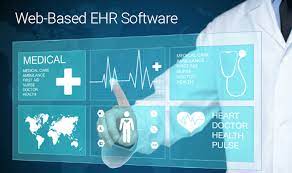How To Successfully Implement ASC EMR
Because nearly every practise has an immediate, practical interest in improving the efficiency and use of their EHR system, we're addressing the critical questions of how healthcare providers should approach ASC EMR development and implementation to ensure that the system adds value to the medical care they provide in our blog.
We'll go through the fundamental technological features of EMR system development, which will help you organise your implementation project and create a system that's tailored to your medical practice's demands, as well as scalable, secure, and user-friendly.
1. The Right Mentality
"Attitude is everything," as they say, and implementing a new process change such as an EHR is no exception. Change can be frightening. The most frequent reaction to major change is resistance, which involves pointing out all of the reasons why the change is harmful while dismissing the benefits. This can unnecessarily spread throughout the organisation, resulting in a sloppy execution. One of the most effective strategies to fight this knee-jerk reaction is to start at the top with a positive attitude toward change and to include key individuals further down the line in the decision-making process while remaining open and honest. This is crucial for successful ASC EMR system.
2. Qualified IT Resources
When it comes to possible EHR adoption failure areas, IT is second only to attitude. IT may be a perplexing realm, thus having a professional IT vendor or in-house team capable of working with an outside partner in terms of both time and cooperation is critical. Networking, workstations, ancillary gear, and servers are just a few of the components that make up your IT infrastructure that are crucial for success. Reliable IT resources will be with you every step of the way, giving the assistance you require in all of these areas to guarantee a successful go-live and beyond.
3. Employee buy-in
Listening to the sceptics and addressing their concerns early on can assist to prevent negativity from spreading. Taking the effort to identify current and perceived workflow snags and addressing them with your EHR partner's and internal implementation teams will help you get the buy-in you need to make the transition as seamless as possible. Including as many people as feasible in the implementation process will also aid good buy-in. Employees are significantly less likely to complain about a solution they helped develop. Everyone will profit if you keep your employees engaged within sleep medicine EMR and motivated.
Make Your Implementation Easier
Healthcare providers use electronic health records (EHRs) to communicate information with other healthcare providers and organisations such as laboratories, specialists, insurance, medical imaging centres, pharmacies, emergency rooms, and school and workplace clinics. Through deeper insights into their medical conditions obtained and aggregated from numerous sources, the information flow allows all parties involved to provide patients with more sophisticated care, more accurate diagnosis, and treatment.
Health information exchange is heavily regulated by numerous rules and standards for message format, document architecture, clinical templates, user interface, cybersecurity, and patient data linkage to ensure that data in ASC EMR is never corrupted and to maintain data interoperability, usability, and safety.
For more info, visit 1st Providers Choice!



Comments
Post a Comment